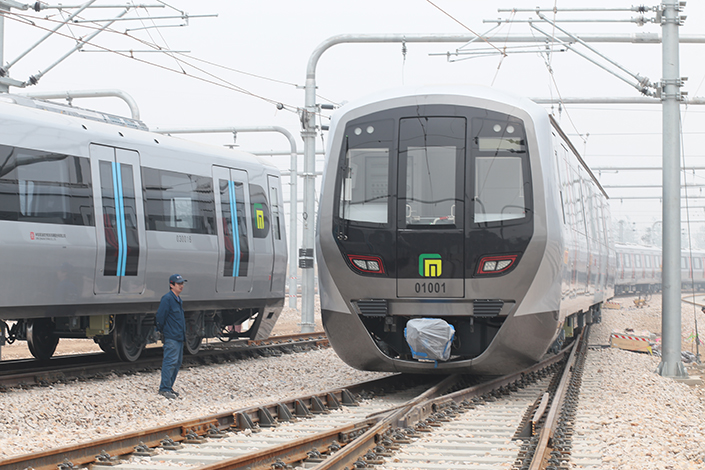Subway Newcomer Trains Sights on State Giant

Beijing’s city-owned railway equipment-maker is rolling out a major new plant for subway-car manufacturing with the hope of undercutting national giant CRRC Corp. Ltd.
The new 250-acre facility will be in the city of Baoding, about 100 miles from Beijing, Beijing Infrastructure Investment Co. Ltd. said. It is hoping to capture business from the city, which plans to build four subway lines by 2030 and will need hundreds of subway trains in the process.
Beijing Infrastructure Investment hopes to win favor with Baoding by bringing hundreds of jobs and other economic activity to the industrial city, which once was the capital of Hebei province, said an employee of Beijing Infrastructure, founded in 2003 as the Beijing Mass Transit Railway Group. That plan could give it an edge over CRRC, the country’s largest subway train-maker, which has no subway plants in the city.
Infrastructure development and investment in Hebei have heated up in recent months since the central government announced major plans to develop the Xiongan New Area near Baoding as a major new urban center. That plan was aimed at relieving pressure from nearby Beijing, and could see many nongovernment entities relocated to the area.
As China’s dominant supplier of subway cars, CRRC has benefited from a boom that has seen most of China’s largest cities build new urban transit systems over the last decade. CRRC has tried to take that expertise abroad over the last two years, winning deals to provide subway cars to the North American cities of Boston, Chicago, Los Angeles and Montreal.
Beijing Infrastructure broke CRRC’s monopoly on the market in 2012 when it won a bid to supply trains for Line 7 of its hometown subway system in Beijing. But the smaller rail firm, directly controlled by Beijing’s municipal state-owned asset manager, still accounts for only about 10% of the domestic subway-train market.
That market is already showing signs of large overcapacity as subway-car demand begins to slow with the completion or the end of large-scale building for many major systems. The combined production capacity of CRRC’s subsidiaries is over 9,000 trains a year, but the company estimates Chinese demand is at best just over half that level.
Competition between local and central state-owned enterprises will only exacerbate overcapacity, and isn’t conducive to the industry’s development, said Zhao Jian a professor at Beijing Jiaotong University.
Contact reporter Teng Jing Xuan (jingxuanteng@caixin.com)

- 1Wingtech Rebuts Nexperia Claims as Control Fight Threatens Global Chip Supply
- 2France to Receive New Panda Pair Under Renewed 10-Year Deal With China
- 3President of China’s Biggest Property Insurer Under Investigation
- 4 China Flu Cases Surge to Highest Level Since 2022
- 5In Depth: How a Sinopec-Led Merger Could Upend China’s Jet Fuel Market
- 1Power To The People: Pintec Serves A Booming Consumer Class
- 2Largest hotel group in Europe accepts UnionPay
- 3UnionPay mobile QuickPass debuts in Hong Kong
- 4UnionPay International launches premium catering privilege U Dining Collection
- 5UnionPay International’s U Plan has covered over 1600 stores overseas






